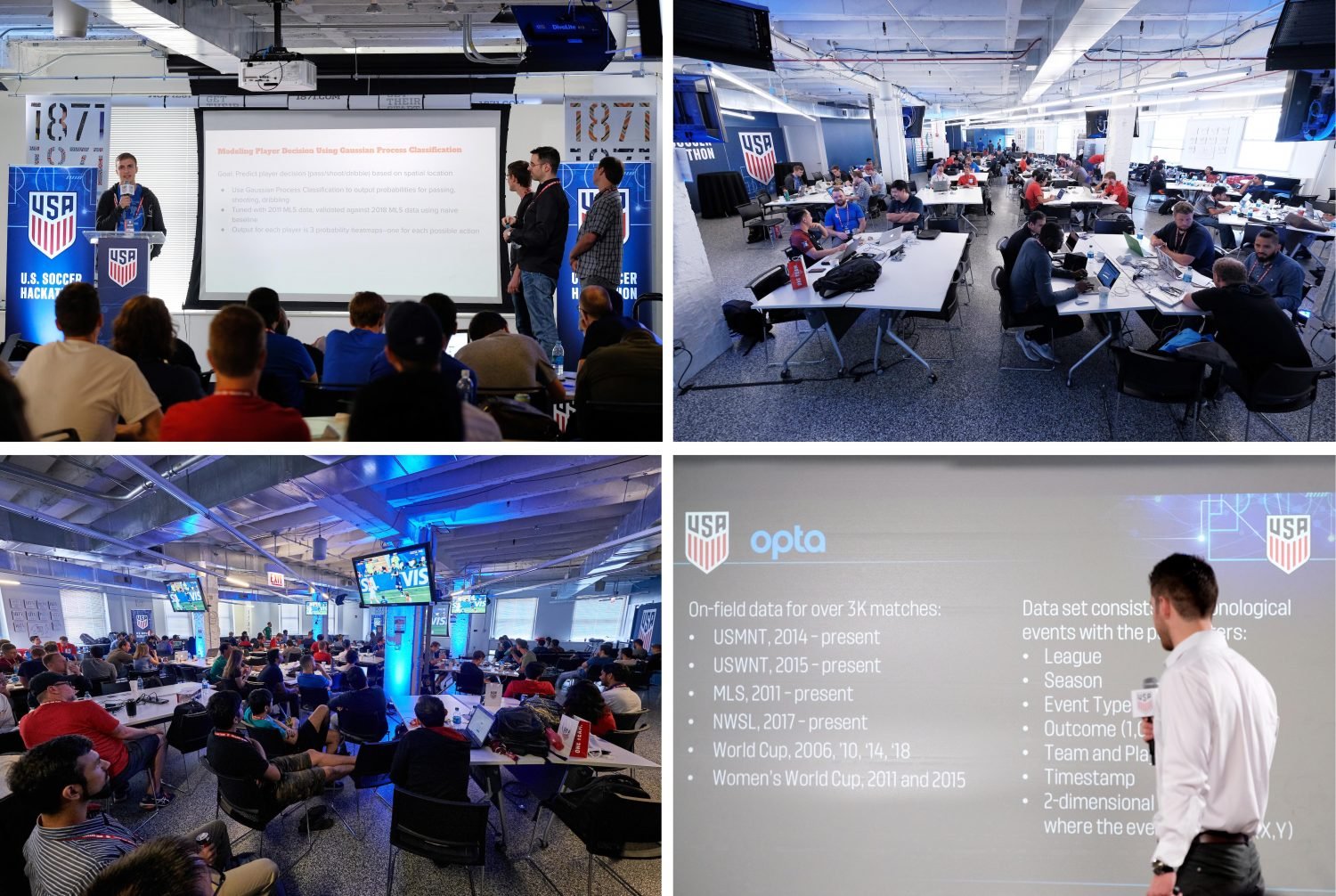Applying data and analytics to influence performance and selection
The soccer analytics field has made many strides in the last few years and continues to evolve as it becomes a more accepted and important part the game. U.S. Soccer represents one of the country’s leaders when it comes to innovation and using data analytics across various initiatives.
It is this strive for innovation that led to U.S. Soccer organising the country’s first soccer-focused hackathon. A two-day event that took place in Chicago over the weekend of the 2018 World Cup final, the U.S. Soccer hackathon brought together 140 people who had two things in common– a love of data, and a love of soccer.
The event tasked participants across both commercial and performance data tracks. As U.S. Soccer’s official Live Match Data Provider, a vast breadth of Opta performance data across both domestic and international competition was made available.
Speaking at the event itself, Ross Moses, Director of Analytics and Research at U.S. Soccer said: “This is about developing and sharing new ideas to challenge how we measure and present what happens on and off the field. There’s a lot of undiscovered territory in soccer analytics, obviously more so than sports like baseball and basketball. So, we’re going to democratise the data for 24 hours and let those smart folks try to hack some ideas and problems in and around the sport.”
One of the key goals for U.S. Soccer here was to expand and progress the thinking within this industry as a whole and how it applies data to address on-field questions. With other North American sports further along their analytics journey, this has been a significant stepping stone in this process for not only U.S. Soccer, but the wider soccer analytics community.
More information on the hackathon can be found here.
The hackathon provided a great opportunity for U.S. Soccer to go beyond the traditional soccer bubble, and engage new minds to work with this vast quantity of data.

Commitment to a long-term strategy
U.S. Soccer has undergone significant change in the recent past. While those on the outside may not have an appreciation for the volume and quality of work that goes on behind the scenes, U.S. Soccer’s work beyond the pitch demonstrates a long-term commitment to not only fielding the strongest teams, but to also ensure there’s a validated, considered process in the selection and development of the country’s wide range of players.
At the start of this process is the U.S. Soccer Development Academy (DA). Across the country, over 2,000 boys and girls’ matches are being captured at youth level. For the first time, U.S. Soccer can quantify what is happening on the pitch.
This innovation better connects U.S. Soccer with player performance across the country, providing fresh, objective insights on how the game is played at this level.
Discussing this initiative, Moses said: “Providing data up and down the country gives us not only a better understanding of how the game is played at this level, but also creates a feedback loop back to scouts and the clubs, which can inform coaching decisions.”
As well as near-immediate player development, the initiative will also inform U.S. Soccer’s player pathway strategy.
“In the long term we’re excited about this coming to life. We’ll be looking at national team players and understanding what a typical national team player looks like and what they can do at a positional level. Here’s what they tend to look like at 15, 16, 17, and we can build out a literal profile of players we should be looking at within this age group. It will have significant payoff in terms of our scouting efficiency given the size of the youth soccer population in the U.S.”
